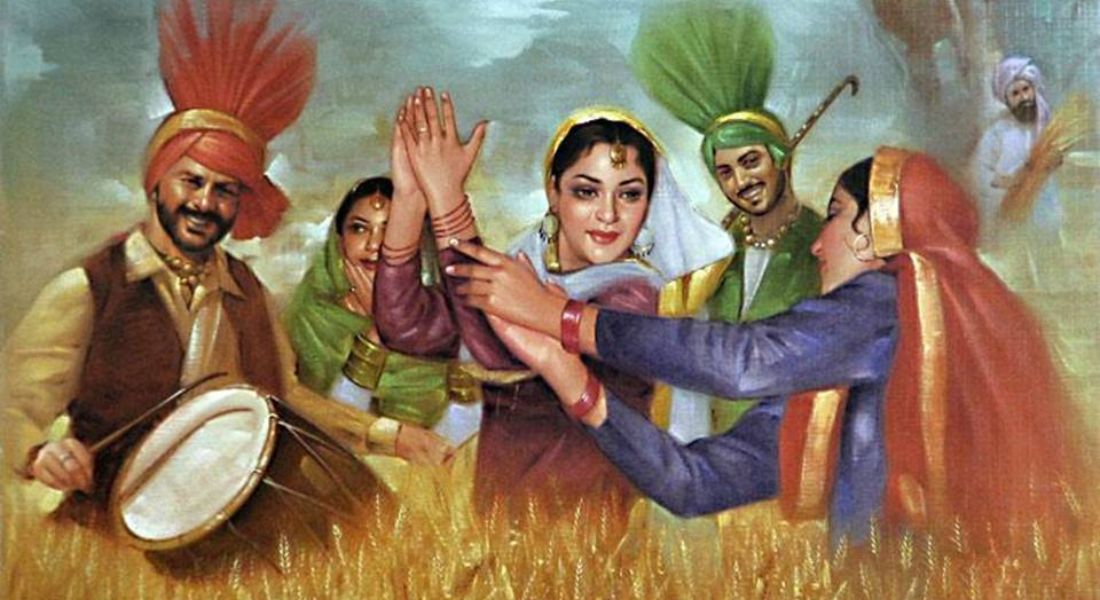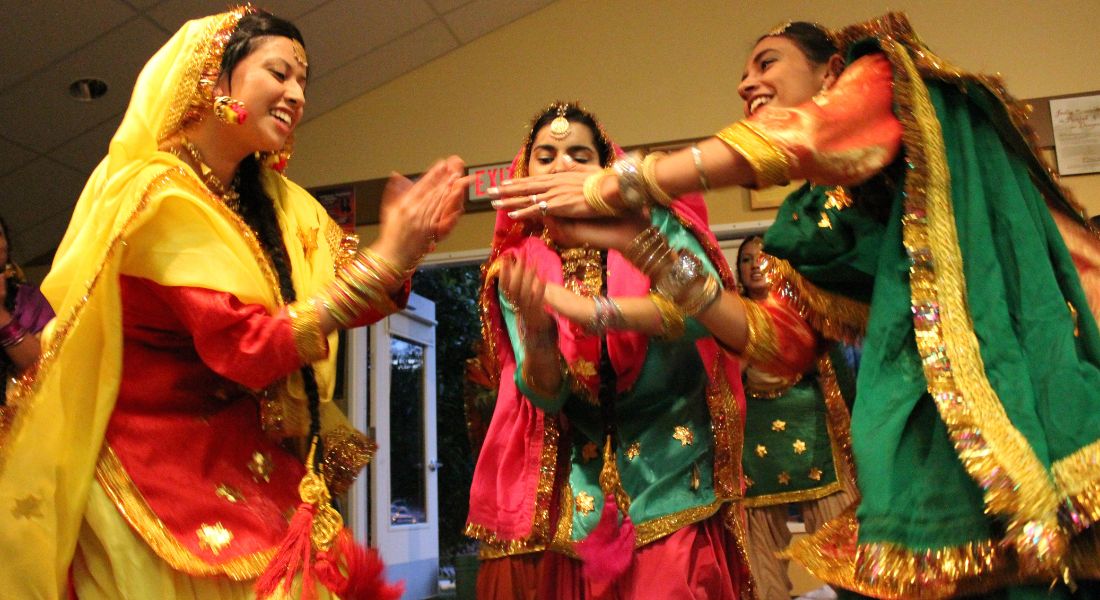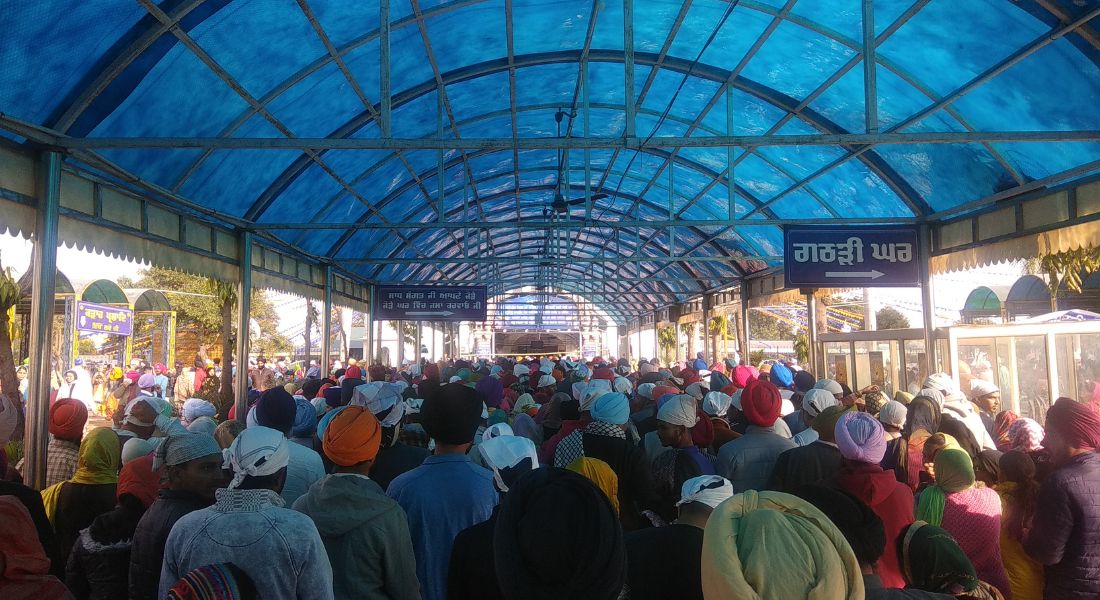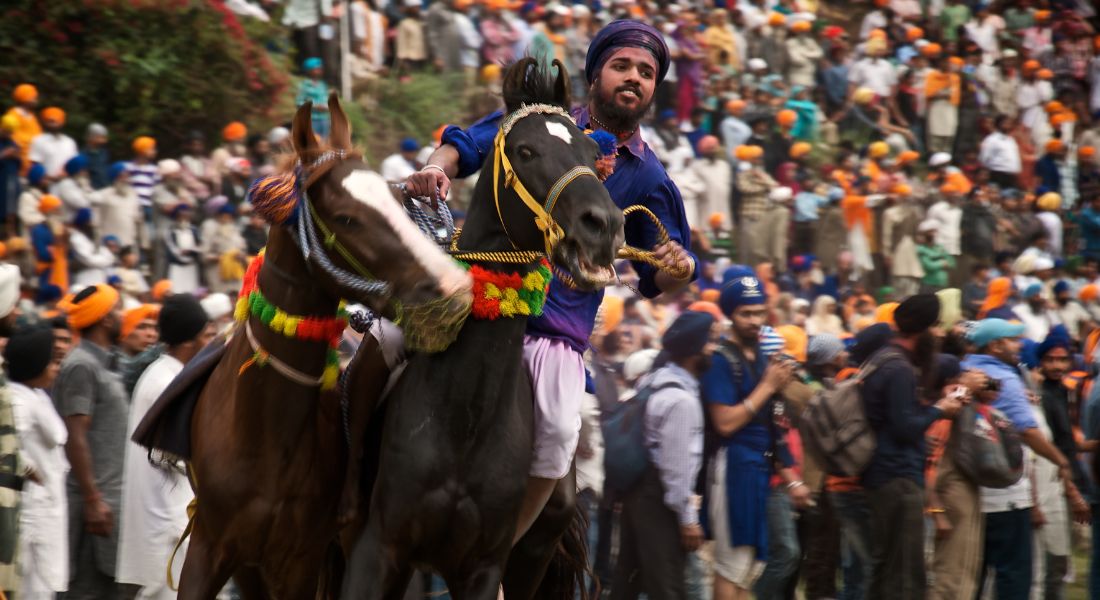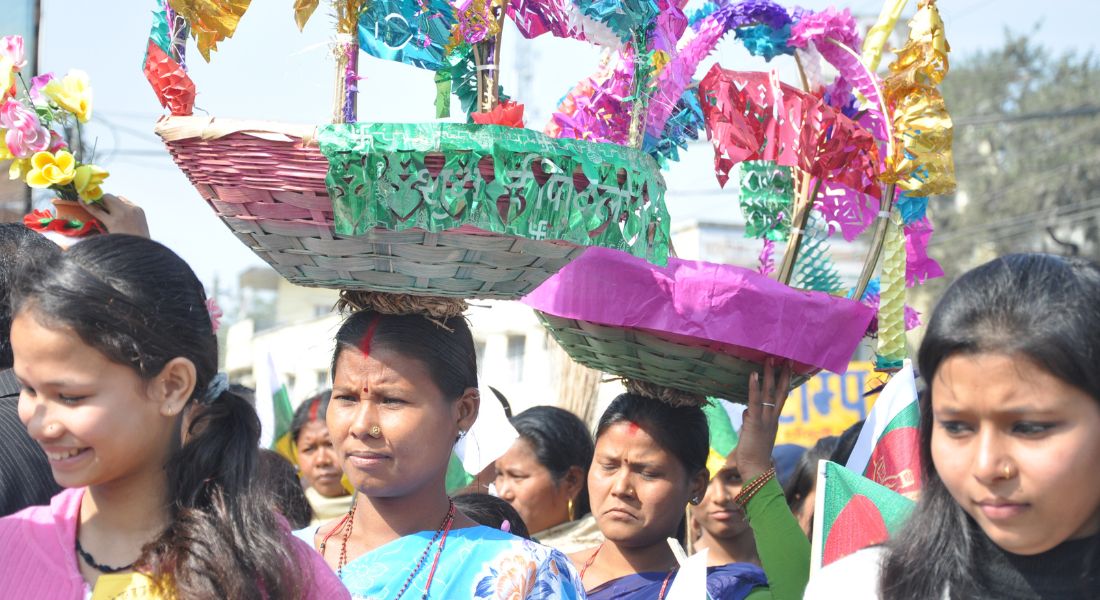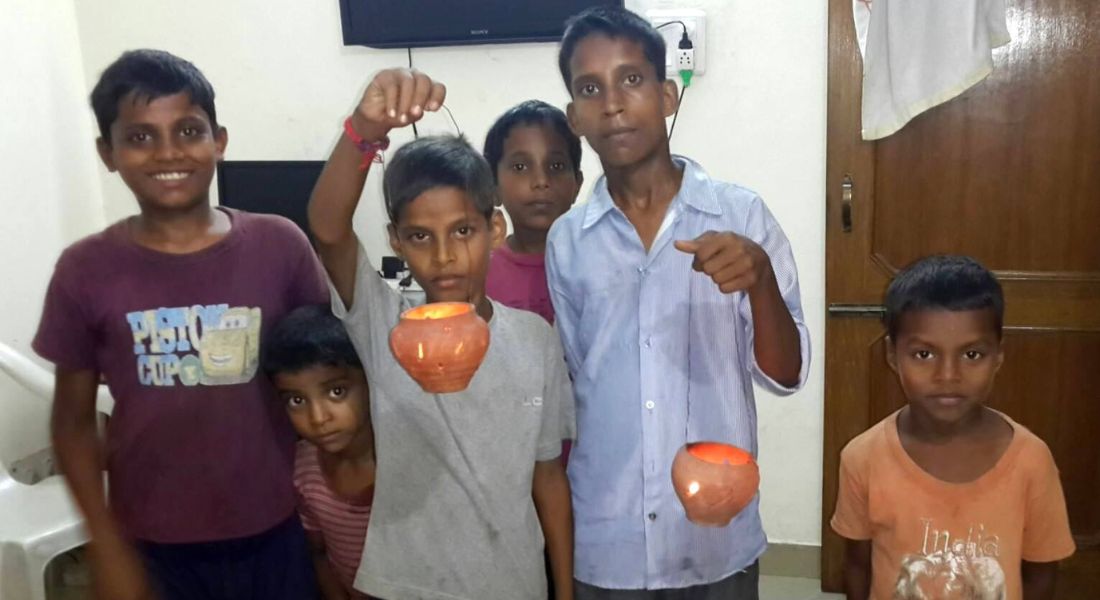Uncategorized
14 Festivals of Punjab that are a Cultural Delight
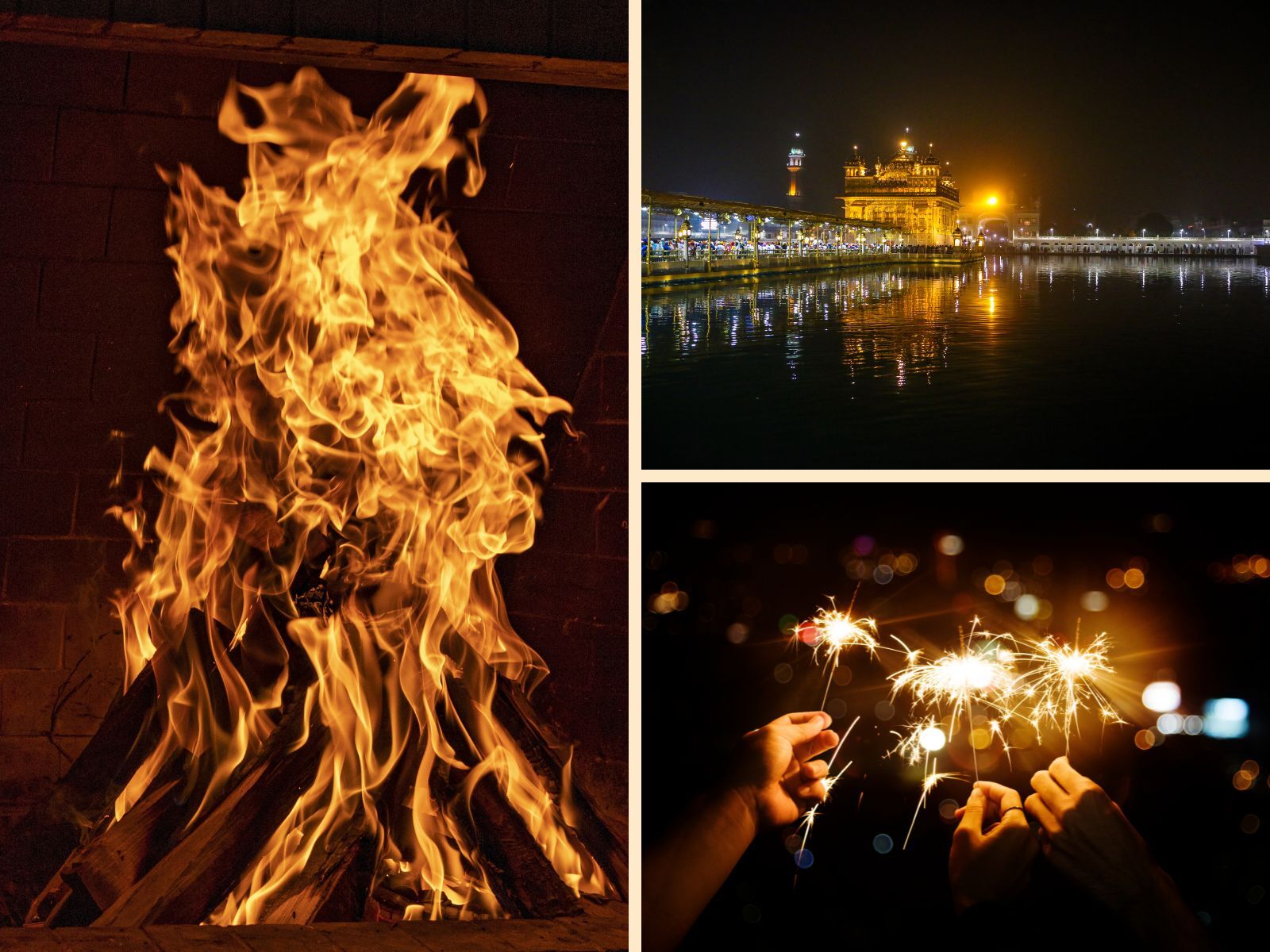
Besides being the land of five rivers, the enriched and sufficient Punjab is a cultural hub. From the famous festivals of Punjab to the prosperity that grows and flows in the state, makes it one of a kind destination.
Luckily, people living in Punjab get the opportunity to celebrate various auspicious festivals throughout the year. Be it Lohri that comes at the very beginning of the year or following others.
It will not be wrong to say that all these Punjabi festivals are the pride and glory of not only the state but also its people. Thus, let’s get straight to all of them and know about their significance and timing of arrival.
1. Lohri
Out of the most famous festivals of Punjab, Lohri comes to the top, because its celebratory spirit is unmatched. When the temperatures drop in the Northern part of the country, Lohri is celebrated with a bang.
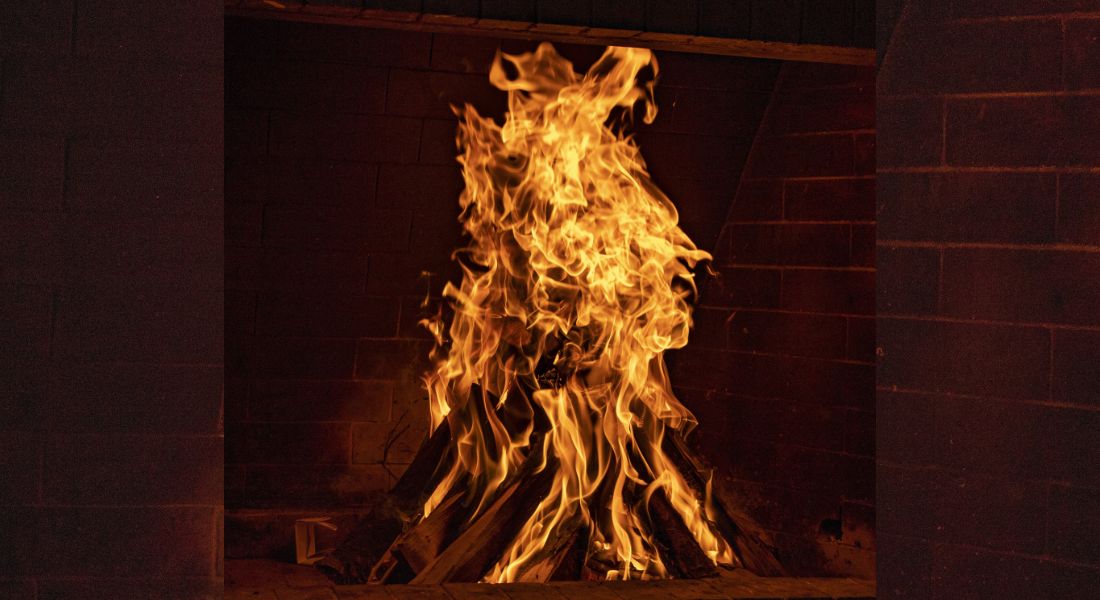
Furthermore, the day is celebrated for various reasons like to remember Dulla Bhatti, who saved Hindu girls from the Mughals. Also, the belief is that after this day, the heat from the sacred fire reaches the skies and marks the return of the chilly winter season.
The highlight of this Punjabi festival is the bonfire, dancing, folk music, and traditional clothes. Besides these, it is a grand feast where families have gurh, gachak, dry fruits, plain popcorn, etc. 13th of January is the date when people enjoy the festivities of Lohri.
2. Baisakhi
Baisakhi or the harvest festival of Punjab is to commemorate the harvesting of the first crop of the year. Every Punjabi, especially the farmer families celebrate Baisakhi with full power, as it is their sweet labor of hard work.
Not only this, but it also marks the first day of the Sikh New Year. To double the fun, people perform Bhangra on the sounds of Dhol and local music. Additionally, Punjabis are famous to relish their food, and it is a feast on this day too. It is usually celebrated in the middle of April. (Mostly, 13th April)
3. Gurupurab
Another extremely auspicious festival in Punjab is Gurupurab. It is a very important celebration, especially for the Sikh community, as it is the birth anniversary of the first Sikh guru, Guru Nanak. He is also the founder of Sikhism and played an important role in shaping the community and its belief.
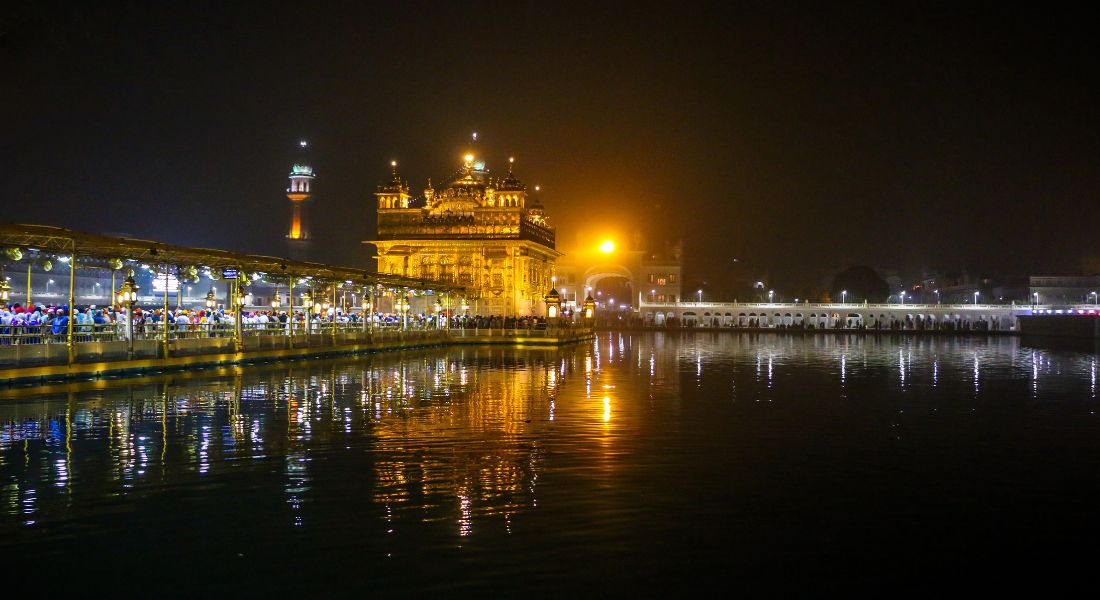
On the day of Gurupurab day, people visit the Gurudwara sahib, offer prayers, and seek blessings. After the darshans, everyone enjoys the langar together and at night light candles and diyas. There are religious processions all over the state and Gurudwaras are beautifully decorated. Usually, Gurupurab comes in the month of November.
4. Teeyan
Just like Baisakhi marks the onset of the Spring season, Teeyan is a celebration to welcome the monsoon season in Punjab. Traditionally, women used to apply mehendi (Heena) on their hands and enjoy on swings tied to trees. Also, everyone gets together, wears traditional Punjabi suits, and dances to the songs.
The whole idea behind this celebration is also to depict that wives are not hesitant to dedicate their lives to their husbands. Finally, the festivity includes Teeyan Gidha, soulful music, and swings.
5. Diwali
Out of many festivals of Punjab, Diwali is one of the most awaited ones. Everyone celebrates the festival in different regions and districts of the state in full swing. Houses are decorated with lights and diyas, and people distribute sweets to near and dear ones.

Additionally, villagers worship their cattle on Diwali and generally people visit their respective holy places to seek blessings.
6. Tikka/Bhai Dooj
Just after Diwali, Bhai Dooj, known as Tikka in Punjab is celebrated. It signifies the precious and pure bond between a brother and a sister. It is commemorated in a simple manner, where the sister applies Tikka on the brother’s forehead. In return, the sister gets gifts and sweets.
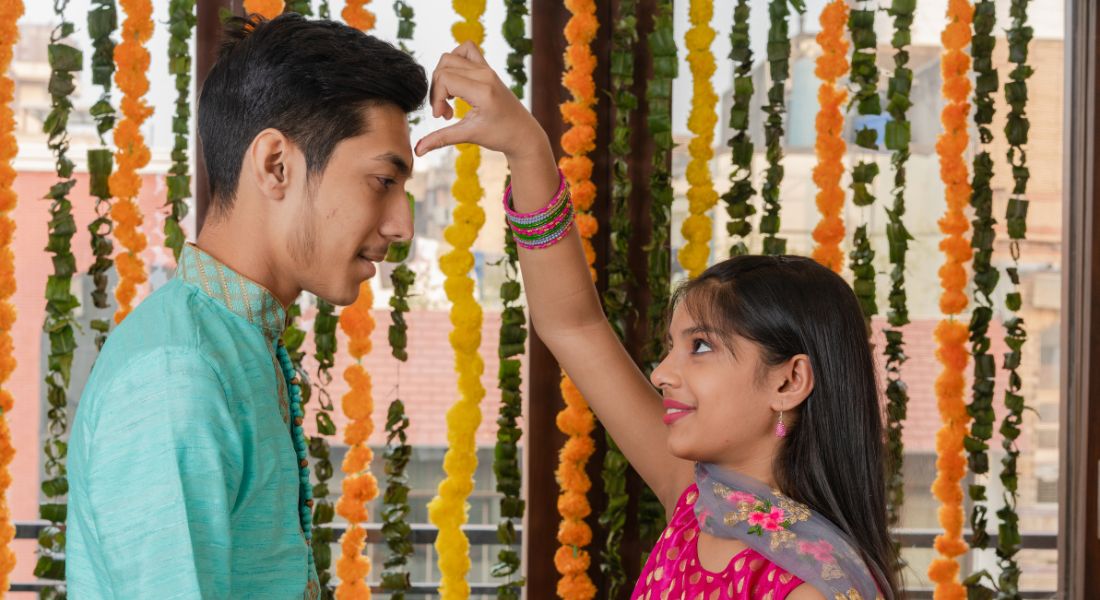
Overall the significance of Tikka is celebrating the beautiful relationship between siblings. A sister prays for a long and healthy life for her brother. On this day, both of them dress up well, eat sweets, and have a good time together.
7. Jor Mela
Out of so many religious festivals of Punjab, Jor Mela is one of them. Devotees commemorate the martyrdom of Zorawar Singh and Fateh Singh, who were children of a Sikh Guru. (Guru Gobind SIngh) Shaheedi Jor Mela is a religious get-together, where there are frequent processions on the roads.
Every year, it is held at Gurudwara Fatehgarh Sahib in the Fatehgarh Sahib district of the state. Not only it is attended by lakhs of people, but followers arrange open langars for the attendees to enjoy. Finally, people pay their homage and enthusiastically participate in nagar kirtan, langar, kirtan, etc. There is a recital of the holy Sikh Book also.
8. Karwa Chauth
This Hindu festival is very popularly celebrated in Punjab. According to this festivity, a married woman keeps a fast for her husband’s long life and prosperity. The nirjala vrat is to be kept for the entire day and women open their fasts on seeing the moon at night.

Women dress up like newlyweds and gather in the evening for an evening katha (Pooja). The festival comes on the fourth day of Krishna Paksha in the month of Kartik. Women not only look their best but end their fast in the presence of their husbands by sipping water.
Before keeping the whole day fast, the women can get up in the morning and eat Sargi which is prepared by mother-in-laws. Also, it falls on the last week of October.
9. Basant Panchmi
This Punjab festival is celebrated in honor of Goddess Saraswati and also the onset of Spring. Although it is a Hindu festival, however, it is commemorated in the state with full enthusiasm and zeal. It is considered to be one of the main and auspicious festivals of Punjab to buy anything new.
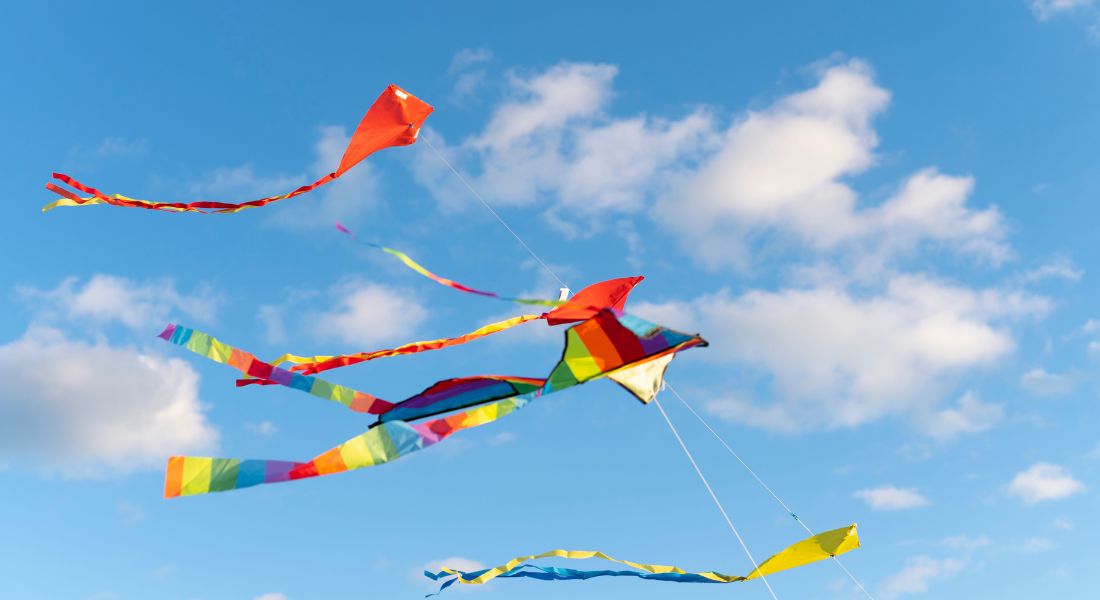
For a positive start, buying a house, getting married, or anything else, Basant Panchmi is favorable. Also, people wear bright, preferably yellow clothes and fly kites too.
10. Hola Mohalla
Mainly celebrated in Anandpur Sahib and Kiratpur Sahib, Hola Mohalla is also a religious festival. People commemorate it after Holi and is Guru Govind Singh’s acceptance of Khalsa Panth.
Not only all the gurudwaras are decorated beautifully but also there is an excellent arrangement of paths and kirtans. There are religious programs, cultural activities, langar at the gurudwaras, and horse riding by Nihangs too.
11. Chappar Mela
Significantly a huge fair in the Chappar district of Ludhiana, this mela celebrates the assumed lord of snakes, Gugga Pir. All the attendees who visit the fair enjoy the folk music and various dance performances.
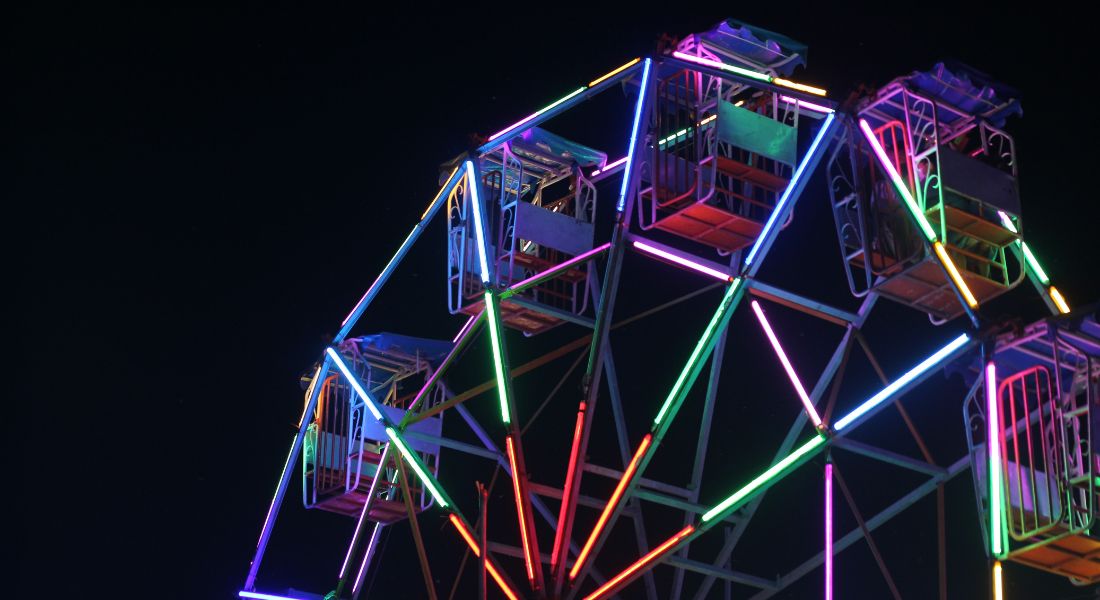
Not just these, there are many thrilling activities, food stalls, game areas, art & craft spots, etc Although, it started 150 years ago, it still sees a huge footfall every year.
12. Maghi
Makara Sankranti or Maghi is a popular festival and is held in remembrance of forty sikh martyrs. It is held each year at Muktsar Sahib to commemorate the martyrs who gave their lives to guard their tenth guru.
On this day, people gather together and prepare Kheer, especially in Sugarcane juice. It is usually observed on a day in the month of January.
13. Rakhri
Commonly known as Raksha Bandhan is known as Rakhri is among the most common festivals of Punjab is a celebration of a sister and brother’s bond. It is celebrated on the same day as that of the lunar month of Sawan.
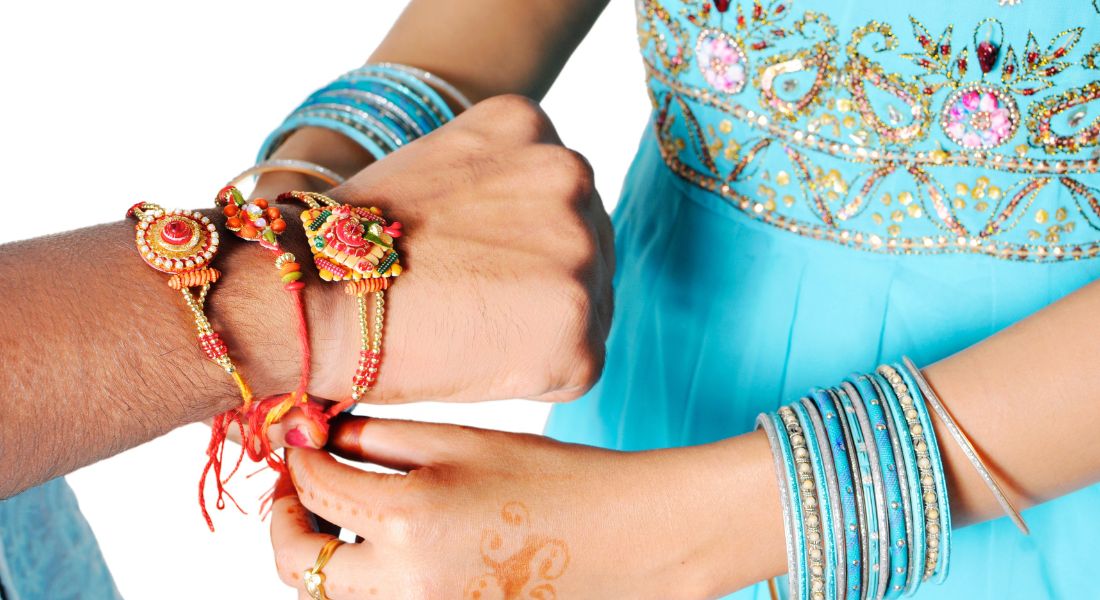
A sister ties a rakhi (a thread) around the wrist of her brother. In return, the brother promises to always take care of her and also gives her gifts. Also, this festival usually falls in August.
14. Gadbade
On this day, it is a full moon night and it comes just a few days before Diwali. Celebrated on Sharad Purnima, where children paint the earthen pots will holes (Gadbade) and light diyas in the center.
Children paint and worship the pots after the full moon is visible in the sky. Also, children are treated with chocolates, toffees, or Kheer (something sweet) and gift too.
Uncategorized
A New Hope for Spine Patients: Dr. Aditya’s Groundbreaking Surgery in Tricity
Jammu, November 16: A big step for spine care has taken place in Tricity.

Dr. Aditya’s Groundbreaking Surgery in Tricity marks a major step in modern spine care. Dr. Aditya Gupta from Paras Hospital, Panchkula, performed the region’s first awake endoscopic spine surgery. The patient stayed awake under local anaesthesia, which made the procedure safer for someone with heart issues. The technique used a very small 6-8 mm cut, making it far less invasive than traditional spine surgery. Because the patient breathed on his own, the surgery avoided the risks linked to general anaesthesia. Dr. Aditya used a transforaminal endoscopic approach, which helped him target pain-causing spots with accuracy and avoid nerve damage.
Moreover, Dr. Aditya said this keyhole method speeds up recovery. Blood loss stays extremely low. Many patients can walk within an hour of the surgery. This gives confidence to people who fear long recovery periods. This success also shows how fast medical care is improving in the Tricity region, including Chandigarh and Mohali.
Furthermore, Dr. Aditya’s strong education adds to his skill. He completed his MBBS and MS in Orthopaedics in Jammu. Later, he trained at PGI Chandigarh and ranked first in the All India Fellowship Examination in Spine Surgery. He also trained further at leading centers in Ahmedabad and New Delhi. His father, Dr. Rajesh Gupta, heads Orthopaedics at ASCOMS & Hospital in Jammu, which greatly influenced his career path.
Additionally, the Tricity region is becoming known for advanced healthcare. New methods like awake endoscopic spine surgery show how hospitals focus on safe and effective treatments. This helps patients who cannot go through major surgeries due to conditions like diabetes, heart disease, or breathing problems.
As medical technology grows, doctors aim to reduce pain and avoid complications. Awake endoscopic spine surgery supports this goal. It lowers surgical stress, reduces hospital costs, and helps patients return to normal life faster.
In addition, the success of this operation motivates more doctors in the region to learn similar techniques. This will support many more patients who need spine care but fear high-risk procedures. It also boosts the Tricity area’s role as a developing medical hub.
In conclusion, Dr. Aditya’s Groundbreaking Surgery in Tricity stands as a major milestone in spine care. His work brings safer, quicker, and more advanced options to patients and strengthens the future of healthcare in the region.
Uncategorized
Severe Negligence Alleged at Maharana Bhupal Hospital as Family’s Pleas Go Ignored
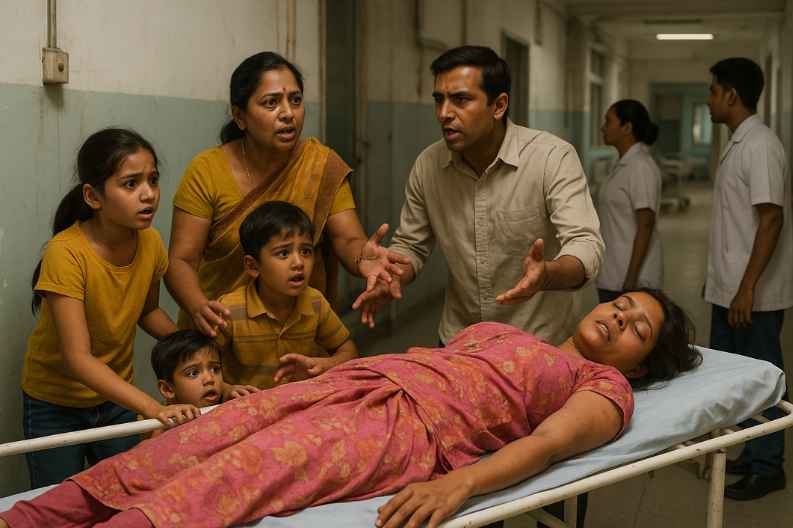
Udaipur: A serious incident where severe negligence alleged at Maharana Bhupal Hospital. A family alleges that hospital staff ignored their repeated calls for help while a mother in critical condition struggled without support. Her two young children and relatives searched desperately for anyone who could assist, but no staff member stepped forward.
Eyewitnesses say the family asked for immediate medical attention several times. Each request went unanswered. As minutes passed, panic grew. What began as a medical emergency soon turned into a moment of deep shock for everyone present.
The family’s account questions the hospital’s emergency response system and the responsibility of on-duty staff. They believe the delay could have changed the course of their lives. “One moment of negligence can change an entire family’s future,” a relative said. They argue that a life-saving institution cannot afford such lapses, especially during critical moments.
Hospital officials have not released a statement so far. The incident has sparked public concern, and many citizens are demanding a quick inquiry and stricter enforcement of patient-care standards.
At its core, the allegation is alarming. A hospital built to protect lives may have ignored a family’s desperate pleas. If the account proves accurate, the problem goes beyond poor care. It reflects a troubling system failure.
For the family, even a short delay carried heavy consequences. For the hospital, this moment calls for transparency and reform. In the days ahead, key questions will shape the investigation: Did staff truly fail to respond? Did they misjudge the urgency? And is this an isolated failure or part of a deeper pattern?
Uncategorized
PM Modi Meets the Victim of the Delhi Blast: A Detailed and Clear Report
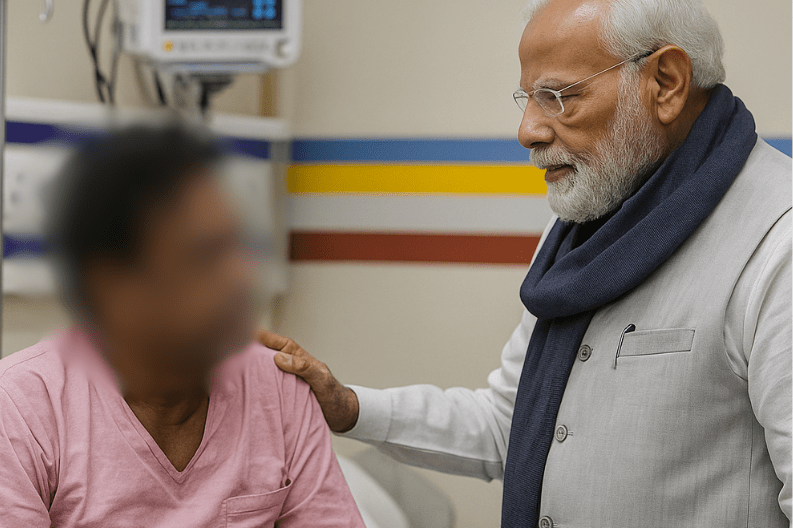
Prime Minister Narendra Modi returned from Bhutan, and PM Modi meets the victim of the Delhi blast, soon after he landed in Delhi. He went straight to Lok Nayak Jai Prakash (LNJP) Hospital on Wednesday. There, he met every injured person and asked about their health. He also spoke with doctors about the treatment. PM Modi told the hospital staff that the government would act fast to support the victims. Security outside the hospital remained very tight due to the serious situation. The blast near the Red Fort on Monday evening killed nine people and injured more than twenty. It happened during rush hour, and many people were scared.
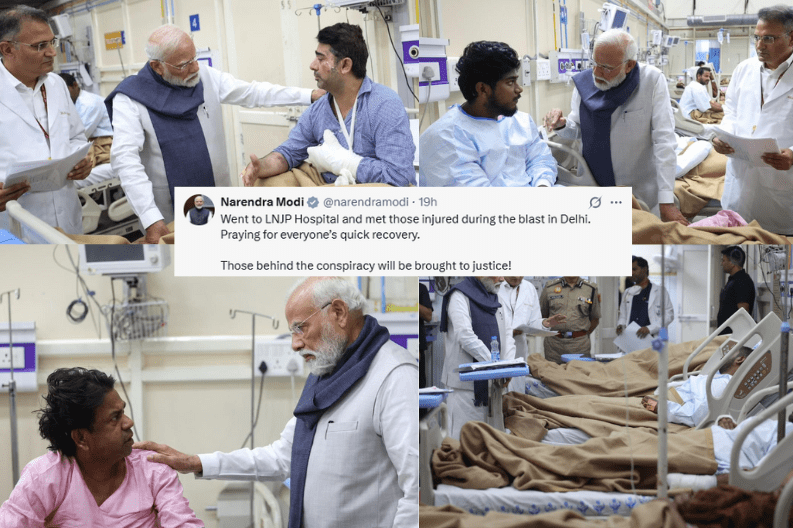
Investigators said the explosion came from a slow-moving Hyundai i20 filled with explosives. The blast damaged several vehicles nearby. Soon after the incident, security agencies arrested eight suspects. This group included three doctors. Police also found nearly 2,900 kg of explosive material linked to Jaish-e-Mohammed and Ansar Ghazwat-ul-Hind. Officers found more ammonium nitrate at a private university in Faridabad. Officials believe the suspects planned to attack during Diwali and later on Republic Day, but they failed to carry out their plans.
Home Minister Amit Shah held an urgent security meeting after the blast. He asked all security teams to work closely and check every detail. The National Investigation Agency (NIA) now leads the case. Security alerts have increased across Delhi, Uttar Pradesh, Bihar, and Mumbai. Police are checking more people at metro stations, markets, bus stops, and religious places. Investigators are also trying to confirm if the blast was a suicide attack because the driver, believed to be Dr. Umar Nabi, died at the scene.
During his Bhutan visit, PM Modi spoke about the tragedy. He said he felt deep sorrow for the victims. He promised that the people behind the blast would face the strictest punishment. After he returned, he posted on X and prayed for the fast recovery of all the injured. Experts are studying the explosive materials now. Early reports show that the bomb was extremely powerful, even stronger than ammonium nitrate bombs used before.
As the investigation continues, the government is trying to assure citizens that the city is safe. More police teams now guard crowded places to prevent further danger. PM Modi said such attacks will not break India’s unity. He ended the day by promising that everyone involved in the planning or execution of the blast will face justice. With his strong message and his hospital visit, PM Modi meets the victim of the Delhi blast, which stands as a clear sign that the government will support the victims and protect the country.
-

 City Guide3 years ago
City Guide3 years ago3B2 Mohali Market Shops: Discover 44 Hidden Gems
-

 Entertainment2 years ago
Entertainment2 years agoTop 15 Punjabi Models – Male and Female List
-

 Entertainment3 years ago
Entertainment3 years agoTop 11 Punjabi Comedians of All Time
-

 Jobs4 years ago
Jobs4 years agoTop 20 IT Companies in Mohali
-

 Food4 years ago
Food4 years ago11 Best Restaurants in Mohali You Must Visit
-

 Property2 years ago
Property2 years agoWho Lives In Homeland Mohali: Punjabi Celebrities, Business People…
-

 Food3 years ago
Food3 years agoTop 15 Cafes in Mohali you must visit
-

 Education2 years ago
Education2 years ago10 Famous Punjabi Writers With A Great Impact On The Literary World

